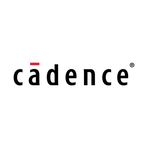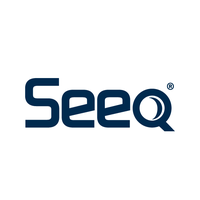The Future of Ecommerce and Industrial Design: AI Takes the Lead
June 11, 2025, 10:26 pm

Location: United States, California, San Jose
Employees: 5001-10000
Founded date: 1988
In the fast-paced world of technology, two giants are making waves: Pattern and Cadence. Both companies are harnessing the power of artificial intelligence (AI) to reshape their respective industries. Pattern is revolutionizing ecommerce, while Cadence is transforming industrial design. Their innovations are not just incremental improvements; they are seismic shifts that promise to redefine how businesses operate.
Pattern, a leader in ecommerce acceleration, has integrated Amazon Nova into its platform. This move is akin to adding rocket fuel to an already powerful engine. With access to 44 trillion data points, Pattern is leveraging Amazon's generative AI capabilities to provide actionable insights for brands. The result? A streamlined content optimization process that can analyze millions of data points across text, images, and videos. This technology offers specific recommendations for enhancing product titles, descriptions, and visual assets. The outcome is a significant boost in traffic and conversion rates.
Imagine a world where ecommerce brands can optimize their online presence with the click of a button. Pattern's Content Brief technology does just that. It synthesizes complex data into concise reports, guiding brands on how to improve their marketplace performance. This is not just a tool; it’s a game-changer. Brands can now execute millions of optimizations daily, ensuring they stay ahead in a competitive landscape.
The financial implications are staggering. Pattern has reported a 76% reduction in costs compared to other generative AI models. This efficiency translates into faster processing times and improved outcomes for brand partners. For instance, one implementation led to a 48% increase in traffic, far surpassing the average category growth of 8%. This kind of performance is what every brand dreams of.
On the other side of the technology spectrum, Cadence is making strides in industrial design. At NVIDIA GTC Paris, the company unveiled its collaboration with NVIDIA to create the world’s first industrial AI cloud. This partnership is like combining a master architect with a powerful construction crew. Together, they are set to accelerate the development of industrial technology.
Cadence’s solutions, optimized for NVIDIA’s Grace Blackwell platforms, promise to enhance engineering capabilities significantly. Customers can expect up to an 80X acceleration in their design processes. This is not just about speed; it’s about quality. The tools provided by Cadence, such as the Fidelity CFD Platform and the Spectre X Simulator, are designed to empower engineers to create smarter, more reliable systems.
Consider the implications for industries like aviation. Ascendance, a company using Cadence’s software, has achieved a 20X reduction in simulation runtimes. This means faster iterations and quicker time-to-market for innovative designs. In a world where every second counts, this advantage is invaluable.
The AI cloud built on NVIDIA’s infrastructure is a game-changer for Europe’s industrial ecosystem. It leverages the Cadence Reality Digital Twin Platform, allowing teams to simulate and optimize operations in a virtual environment. This approach ensures that engineering teams can design facilities that are not only efficient but also future-proof.
Cadence’s advancements are not just theoretical. They are grounded in real-world applications. The company’s Millennium M2000 Supercomputer combines cutting-edge design software with NVIDIA’s powerful GPUs. This synergy accelerates applications across various markets, including automotive and energy infrastructure. The result is a more agile and responsive industrial sector.
Both Pattern and Cadence are at the forefront of their fields, pushing the boundaries of what is possible with AI. Their innovations are not just about technology; they are about transforming industries. For ecommerce, this means smarter, data-driven decisions that lead to increased sales and customer satisfaction. For industrial design, it means faster, more efficient processes that can adapt to changing market demands.
As these companies continue to innovate, the implications for businesses are profound. The integration of AI into everyday operations is no longer a luxury; it is a necessity. Companies that embrace these technologies will find themselves at a competitive advantage. Those that resist will likely be left behind.
In conclusion, the future is bright for both ecommerce and industrial design. Pattern and Cadence are leading the charge, proving that AI is not just a buzzword but a transformative force. As they continue to refine their technologies, the landscape of business will evolve. The question is not whether to adopt AI, but how quickly can companies integrate these powerful tools into their operations? The race is on, and the finish line is just the beginning of a new era.
Pattern, a leader in ecommerce acceleration, has integrated Amazon Nova into its platform. This move is akin to adding rocket fuel to an already powerful engine. With access to 44 trillion data points, Pattern is leveraging Amazon's generative AI capabilities to provide actionable insights for brands. The result? A streamlined content optimization process that can analyze millions of data points across text, images, and videos. This technology offers specific recommendations for enhancing product titles, descriptions, and visual assets. The outcome is a significant boost in traffic and conversion rates.
Imagine a world where ecommerce brands can optimize their online presence with the click of a button. Pattern's Content Brief technology does just that. It synthesizes complex data into concise reports, guiding brands on how to improve their marketplace performance. This is not just a tool; it’s a game-changer. Brands can now execute millions of optimizations daily, ensuring they stay ahead in a competitive landscape.
The financial implications are staggering. Pattern has reported a 76% reduction in costs compared to other generative AI models. This efficiency translates into faster processing times and improved outcomes for brand partners. For instance, one implementation led to a 48% increase in traffic, far surpassing the average category growth of 8%. This kind of performance is what every brand dreams of.
On the other side of the technology spectrum, Cadence is making strides in industrial design. At NVIDIA GTC Paris, the company unveiled its collaboration with NVIDIA to create the world’s first industrial AI cloud. This partnership is like combining a master architect with a powerful construction crew. Together, they are set to accelerate the development of industrial technology.
Cadence’s solutions, optimized for NVIDIA’s Grace Blackwell platforms, promise to enhance engineering capabilities significantly. Customers can expect up to an 80X acceleration in their design processes. This is not just about speed; it’s about quality. The tools provided by Cadence, such as the Fidelity CFD Platform and the Spectre X Simulator, are designed to empower engineers to create smarter, more reliable systems.
Consider the implications for industries like aviation. Ascendance, a company using Cadence’s software, has achieved a 20X reduction in simulation runtimes. This means faster iterations and quicker time-to-market for innovative designs. In a world where every second counts, this advantage is invaluable.
The AI cloud built on NVIDIA’s infrastructure is a game-changer for Europe’s industrial ecosystem. It leverages the Cadence Reality Digital Twin Platform, allowing teams to simulate and optimize operations in a virtual environment. This approach ensures that engineering teams can design facilities that are not only efficient but also future-proof.
Cadence’s advancements are not just theoretical. They are grounded in real-world applications. The company’s Millennium M2000 Supercomputer combines cutting-edge design software with NVIDIA’s powerful GPUs. This synergy accelerates applications across various markets, including automotive and energy infrastructure. The result is a more agile and responsive industrial sector.
Both Pattern and Cadence are at the forefront of their fields, pushing the boundaries of what is possible with AI. Their innovations are not just about technology; they are about transforming industries. For ecommerce, this means smarter, data-driven decisions that lead to increased sales and customer satisfaction. For industrial design, it means faster, more efficient processes that can adapt to changing market demands.
As these companies continue to innovate, the implications for businesses are profound. The integration of AI into everyday operations is no longer a luxury; it is a necessity. Companies that embrace these technologies will find themselves at a competitive advantage. Those that resist will likely be left behind.
In conclusion, the future is bright for both ecommerce and industrial design. Pattern and Cadence are leading the charge, proving that AI is not just a buzzword but a transformative force. As they continue to refine their technologies, the landscape of business will evolve. The question is not whether to adopt AI, but how quickly can companies integrate these powerful tools into their operations? The race is on, and the finish line is just the beginning of a new era.
